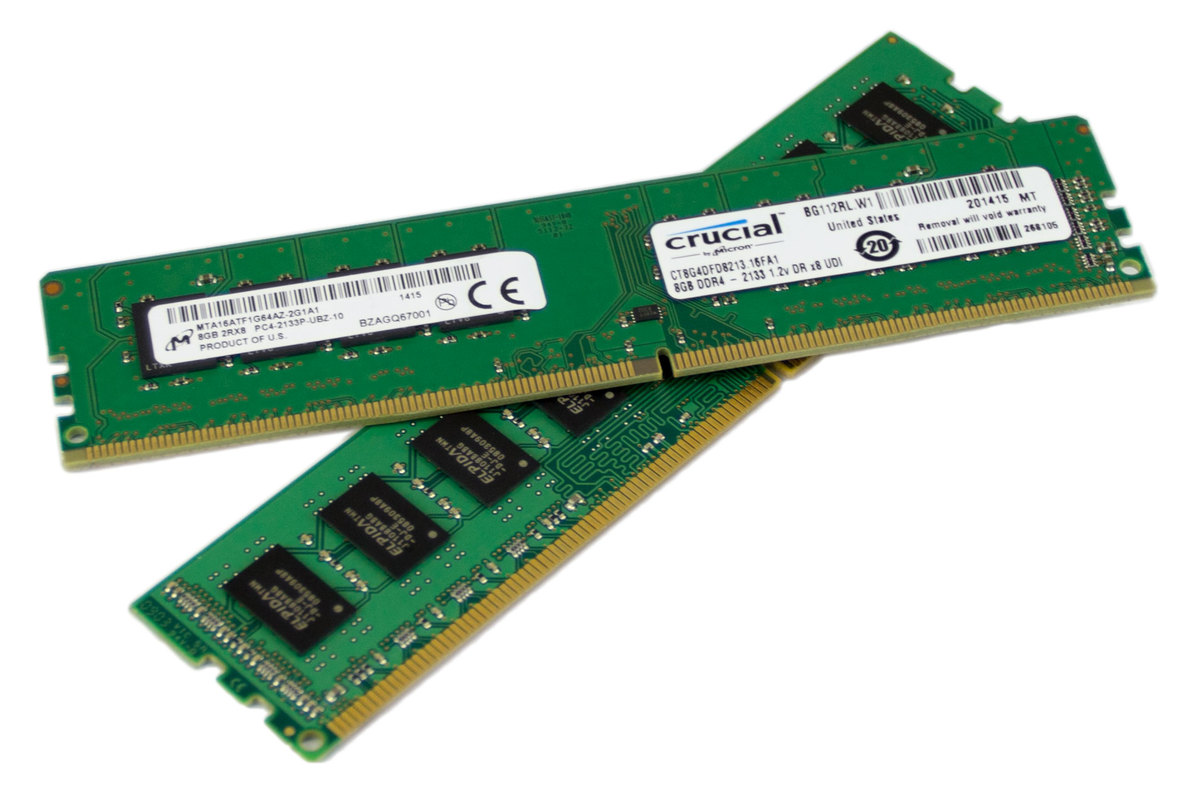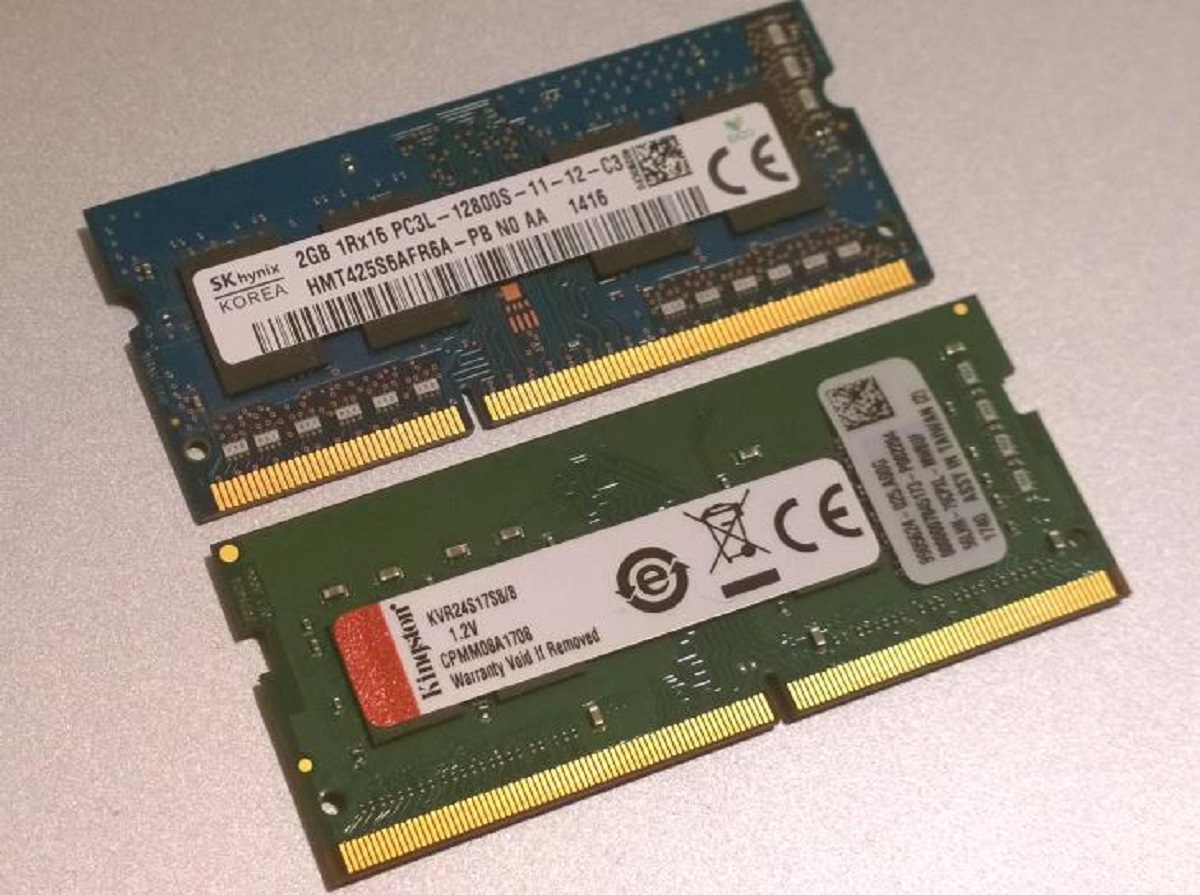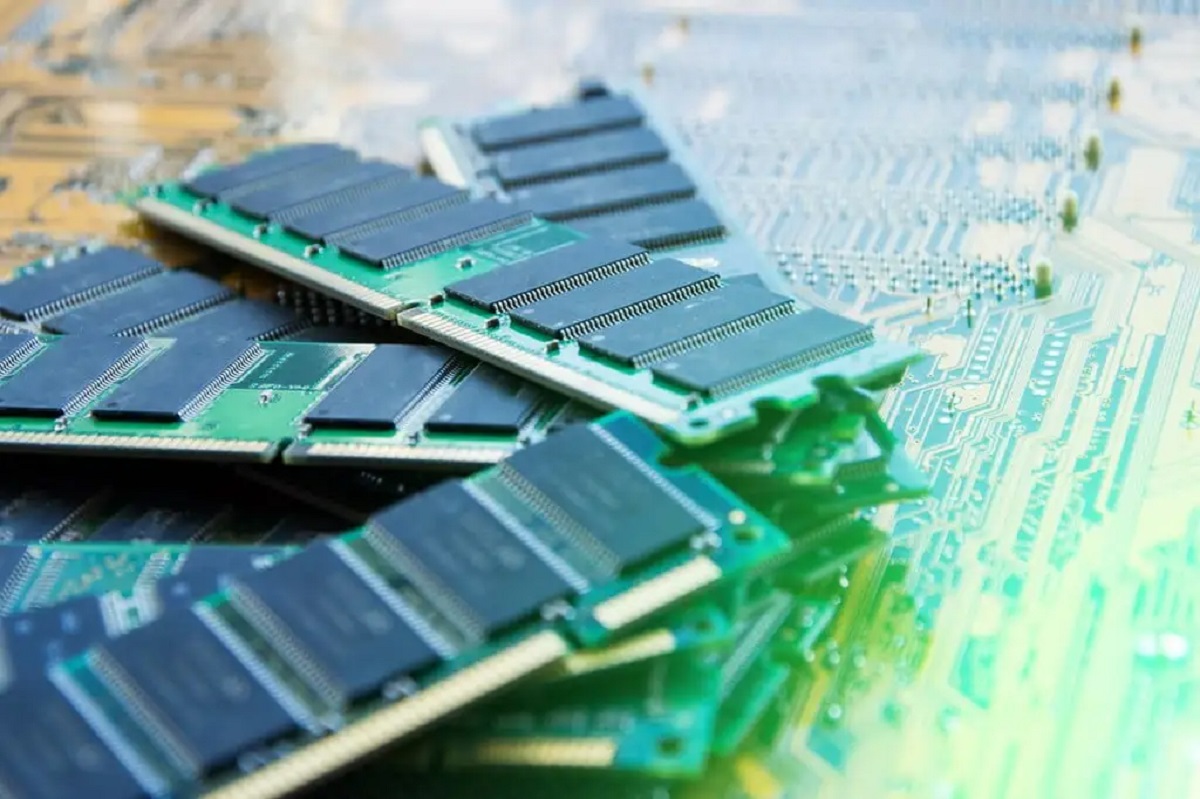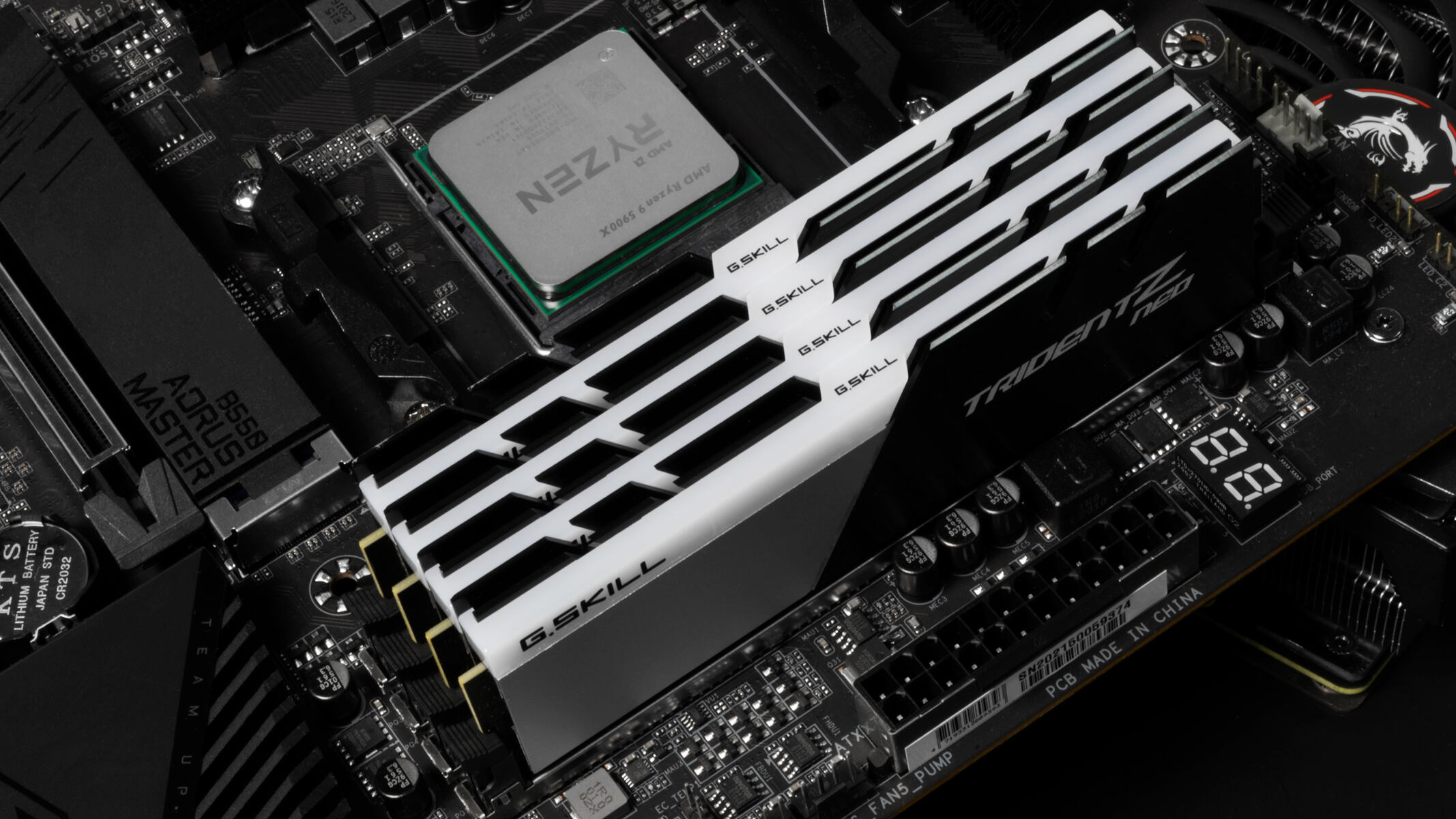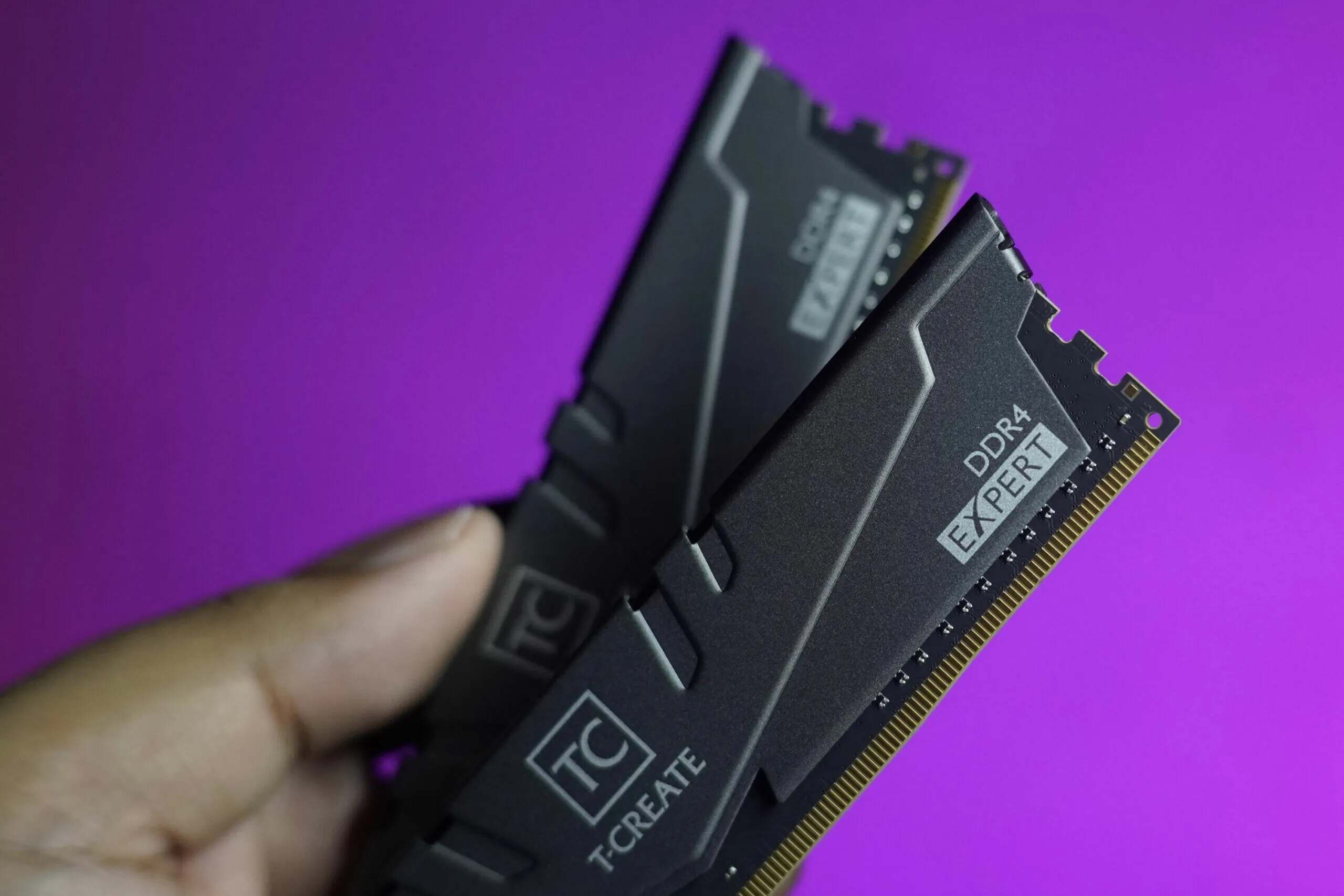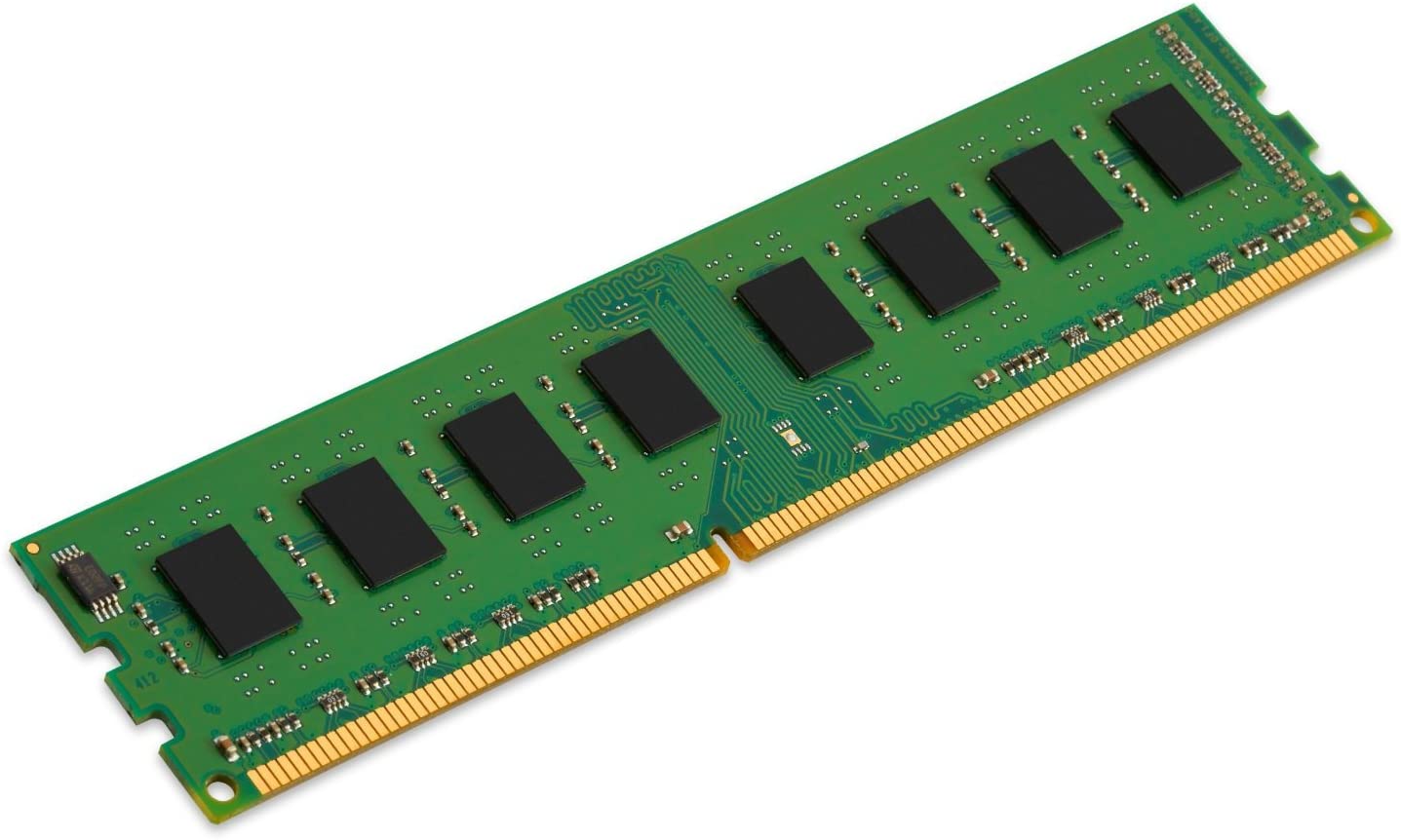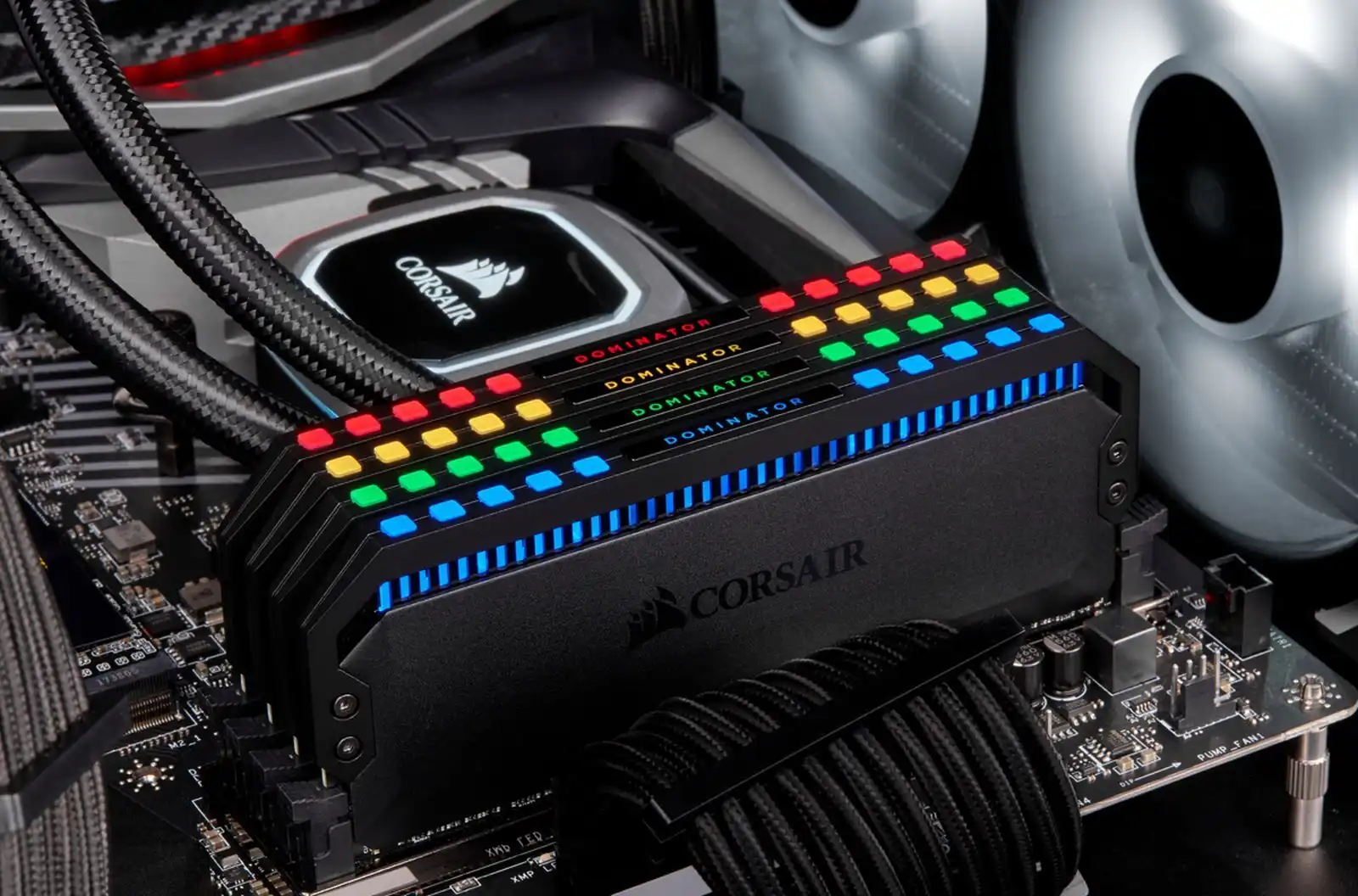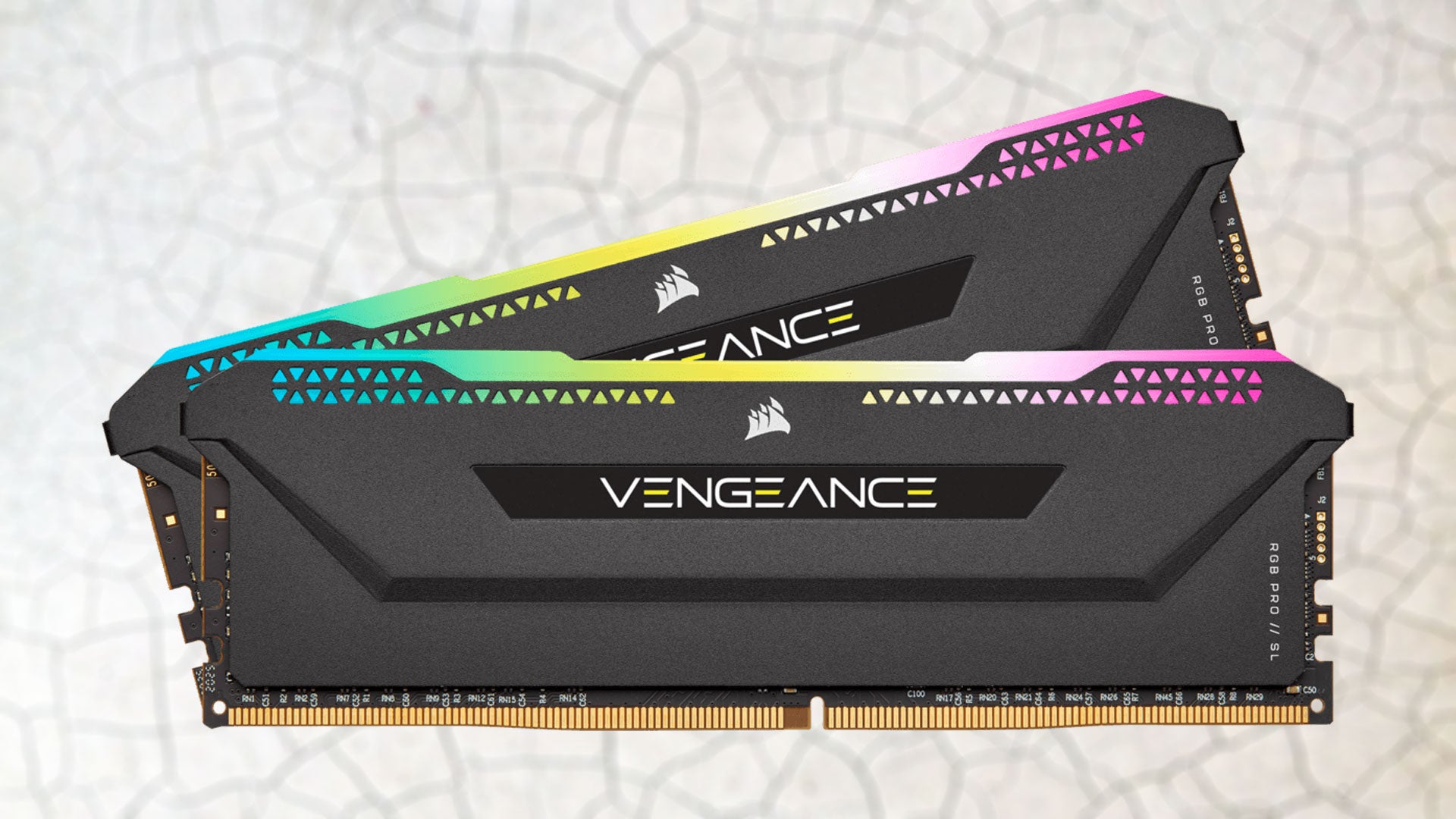Introduction
DDR4 RAM, also known as Double Data Rate 4 Random Access Memory, is a type of computer memory that offers improved performance and higher data transfer rates compared to its predecessors. It is an essential component of modern computer systems and is widely used in various devices, including desktop computers, laptops, servers, and gaming consoles.
Identifying DDR4 RAM physically is crucial for several reasons. Firstly, it allows users to ensure compatibility when upgrading or replacing memory modules. DDR4 RAM modules may have different characteristics, such as speed, voltage, and memory capacity, which need to be matched with the existing system for optimal performance. Furthermore, physically identifying DDR4 RAM can help prevent the risk of purchasing counterfeit or incompatible memory modules.
In this guide, we will discuss how to visually identify DDR4 RAM by examining its key physical features. By understanding what to look for, you will be able to confidently identify DDR4 RAM and make informed decisions when upgrading or troubleshooting your computer system.
What is DDR4 RAM?
DDR4 RAM, or Double Data Rate 4 Random Access Memory, is the fourth generation of DDR memory technology. It is a type of computer memory that provides faster data transfer speeds, higher capacity, and improved power efficiency compared to its predecessors, DDR3 RAM. DDR4 RAM is widely used in modern computer systems, including desktops, laptops, and servers, due to its performance advantages.
One of the key advancements of DDR4 RAM is its increased data transfer rates. DDR4 RAM operates at higher frequencies, enabling it to transfer more data per clock cycle. This results in improved overall system performance, especially in tasks that require frequent memory access, such as gaming, multimedia editing, and data processing.
Another significant feature of DDR4 RAM is its higher capacity. DDR4 RAM modules are available in various capacities, ranging from 4GB to 128GB or even higher. This allows users to have more memory available for running multiple applications simultaneously and handling memory-intensive tasks. Whether you’re a casual computer user or a professional with demanding workload requirements, DDR4 RAM’s increased capacity ensures smoother multitasking and better overall system responsiveness.
DDR4 RAM also introduces more advanced error correction mechanisms, such as ECC (Error Correcting Code). ECC helps detect and correct memory errors, ensuring data integrity and system stability. This is particularly important in critical applications like servers and workstations, where data reliability is essential.
Additionally, DDR4 RAM operates at a lower voltage compared to its predecessors, which contributes to improved power efficiency. The reduced voltage not only reduces energy consumption but also generates less heat, leading to better system cooling and increased component lifespan. This makes DDR4 RAM an attractive choice for energy-conscious individuals and businesses seeking to reduce their carbon footprint and operating costs.
Why is it important to identify DDR4 RAM physically?
Physically identifying DDR4 RAM is crucial for several reasons. Firstly, it ensures compatibility when upgrading or replacing memory modules. DDR4 RAM modules may have different characteristics, such as speed, voltage, and memory capacity. By visually identifying DDR4 RAM, you can ensure that the new module matches the specifications required by your computer system. This compatibility ensures optimal performance and avoids potential issues that may arise from using incompatible memory modules.
Furthermore, physically identifying DDR4 RAM helps to verify its authenticity. Counterfeit memory modules can be a common issue in the market. By closely examining the physical features of DDR4 RAM, such as the branding, labels, and holographic stickers, you can ensure that you are purchasing genuine and reliable memory modules. Counterfeit RAM not only affects performance but can also pose risks to the stability and security of your system.
Physically identifying DDR4 RAM can also help with troubleshooting and diagnosing issues. If you are experiencing hardware-related problems or system instability, checking the physical characteristics of the DDR4 RAM module can provide valuable insights. Loose connections, damaged pins, or other visible issues can indicate potential problems that may need to be addressed, such as reseating or replacing the module.
Additionally, identifying DDR4 RAM physically allows you to monitor and manage your system’s memory configuration effectively. By visually confirming the specifications, such as memory capacity and speed, you can ensure that your system is running optimally. This knowledge becomes especially important when working with memory-intensive applications or running virtual machines that require substantial amounts of RAM. Having an accurate understanding of the physical attributes of your DDR4 RAM enables you to make informed decisions about memory allocation and potential upgrades.
In summary, physically identifying DDR4 RAM is essential for ensuring compatibility, verifying authenticity, troubleshooting hardware issues, and managing system memory efficiently. By paying attention to the physical characteristics of DDR4 RAM modules, you can enhance the performance, stability, and security of your computer system.
How to visually identify DDR4 RAM
Identifying DDR4 RAM visually involves examining specific physical features of the memory module. By understanding what to look for, you can confidently identify DDR4 RAM and distinguish it from other types of memory. Here are the key aspects to consider when visually identifying DDR4 RAM:
1. Form factor: DDR4 RAM modules typically come in a DIMM (Dual In-line Memory Module) form factor. DIMMs have a rectangular shape with notches on the bottom edge. The notches on DDR4 RAM modules are positioned differently compared to previous generations, such as DDR3 or DDR2. Pay attention to the notches and ensure they align with the corresponding slots on your motherboard.
2. Pin count: DDR4 RAM modules generally have a 288-pin design. Count the number of pins on the module to verify that it matches the DDR4 standard. Ensure that all the pins are intact and not bent, as this can impact the module’s functionality.
3. Speed rating: DDR4 RAM modules often specify the speed rating in megahertz (MHz) on a label or etched onto the module itself. The speed rating indicates the memory’s maximum data transfer rate. Common DDR4 RAM speeds include 2133MHz, 2400MHz, 2666MHz, and higher. Ensure that the speed rating matches your system’s requirements for optimal performance.
4. Voltage: DDR4 RAM modules typically operate at a standard voltage of 1.2 volts. This lower voltage requirement contributes to improved power efficiency. Check the label or specifications to confirm that the DDR4 RAM module operates at the correct voltage. Using DDR4 RAM with a higher voltage can damage the module or other components in the system.
5. Memory capacity: DDR4 RAM modules come in various capacities, ranging from 4GB to 128GB or even higher. The capacity is often indicated on a label or etched onto the module. Ensure that the memory capacity of the DDR4 RAM module meets your system’s requirements and allows for future expansion if needed.
By visually examining these key aspects of DDR4 RAM modules, you can confidently identify them and ensure compatibility, reliability, and optimal performance for your computer system. Paying attention to these physical features is essential when upgrading or replacing RAM modules, troubleshooting hardware issues, or managing system memory configuration effectively.
Checking the form factor of DDR4 RAM
The form factor of DDR4 RAM refers to the physical design and shape of the memory module. By examining the form factor, you can ensure compatibility with your computer system’s memory slots. Here are the key steps to check the form factor of DDR4 RAM:
1. Identify the DIMM form factor: DDR4 RAM modules typically follow the DIMM (Dual In-line Memory Module) form factor. DIMMs have a rectangular shape with notches on the bottom edge. These notches help align the module correctly when inserting it into the memory slot. Make sure the memory module you are inspecting matches the DIMM form factor.
2. Compare notch position: DDR4 RAM modules have notches positioned differently compared to previous generations, such as DDR3 or DDR2 RAM. Examine the bottom edge of the DDR4 RAM module and compare the position and arrangement of the notches with the memory slots on your motherboard. The notch placement ensures that the module can only be inserted in the correct orientation, preventing incorrect installation.
3. Ensure correct notch alignment: When inserting DDR4 RAM into the memory slot, the notches on the module should align with the corresponding divider in the memory slot. This ensures a secure and proper connection between the DDR4 RAM module and the motherboard. Aligning the notches correctly ensures that the module is inserted in the correct orientation and prevents any damage to the module or motherboard.
4. Consider any additional notches: Some DDR4 RAM modules may have additional notches on the bottom edge. These additional notches serve specific purposes, such as enabling specialized features or ensuring compatibility with specific motherboards. Check for any extra notches on the module and compare them with the memory slot on your motherboard to ensure compatibility.
Checking the form factor of DDR4 RAM is essential to ensure proper installation and compatibility with your computer system. By examining the DIMM form factor, comparing notch positions, ensuring correct notch alignment, and considering any additional notches, you can confidently identify DDR4 RAM modules that will fit and function correctly with your motherboard’s memory slots.
Identifying the pin count of DDR4 RAM
The pin count is a critical aspect of DDR4 RAM that determines how the memory module fits into the corresponding memory slot on the motherboard. By correctly identifying the pin count of DDR4 RAM, you can ensure compatibility and proper installation. Here are the key steps to identify the pin count of DDR4 RAM:
1. Count the pins: DDR4 RAM modules typically have a 288-pin design. Carefully count the number of pins on the bottom edge of the DDR4 RAM module. Ensure that all the pins are present and intact. Counting the pins accurately is crucial, as variations in pin count can indicate compatibility issues or incorrect module types.
2. Compare with DDR3 or other RAM types: DDR4 RAM modules have a different pin count compared to previous generations, such as DDR3 RAM. DDR3 RAM generally has 240 pins, while DDR4 RAM has 288 pins. By comparing the pin count of a DDR4 RAM module with other RAM types, you can quickly differentiate and identify DDR4 modules.
3. Verify against motherboard specifications: To ensure proper compatibility, refer to your motherboard’s documentation or specifications to confirm the required pin count for DDR4 RAM. Motherboards support specific types of RAM with specific pin counts. Matching the pin count of the DDR4 RAM module with the motherboard’s requirements is critical to ensure a successful and stable installation.
4. Check for bent or damaged pins: While identifying the pin count, also inspect the pins for any signs of damage, such as bending or misalignment. Damaged pins can hinder proper installation and result in poor connectivity or system instability. If you notice any damaged pins, it is recommended to avoid using the module and seek a replacement or repair.
By accurately identifying the pin count of DDR4 RAM, you can ensure proper compatibility and installation with your computer system. Counting the pins, comparing with other RAM types, verifying against motherboard specifications, and checking for damaged pins are crucial steps in selecting and installing DDR4 RAM modules correctly.
Checking the speed of DDR4 RAM
The speed of DDR4 RAM determines the data transfer rate and performance capabilities of the memory module. By checking the speed rating of DDR4 RAM, you can ensure that it meets your system’s requirements and optimizes performance. Here are the key steps to check the speed of DDR4 RAM:
1. Look for speed rating: DDR4 RAM modules often indicate the speed rating in megahertz (MHz) on a label or etched onto the module itself. The speed rating represents the maximum data transfer rate that the RAM module can achieve. Common DDR4 RAM speeds include 2133MHz, 2400MHz, 2666MHz, and higher. Locate the speed rating information on the DDR4 RAM module.
2. Verify compatibility: Check your computer system’s specifications or motherboard documentation to identify the supported speed range for DDR4 RAM. It is important to ensure that the DDR4 RAM module’s speed rating falls within the supported range of your system. Installing RAM with a lower speed may restrict performance, while using RAM with a higher speed may result in compatibility issues or downclocking to a lower speed.
3. Consider your system requirements: Take into account your specific needs and usage scenarios when checking the speed of DDR4 RAM. If you are engaging in memory-intensive tasks such as gaming, video editing, or virtualization, opting for faster DDR4 RAM can provide improved performance and responsiveness. On the other hand, if you have more basic computing needs, selecting RAM with a lower speed may be sufficient.
4. Consider budget and cost: Faster DDR4 RAM modules typically come at a higher cost. Consider your budget and the overall value you prioritize for your system. While speed is an important factor, be mindful of the price-to-performance ratio and choose DDR4 RAM that meets your performance requirements without overspending.
By checking the speed of DDR4 RAM, you can ensure that it aligns with your system’s requirements and enhances overall performance. Pay attention to the speed rating, consider compatibility with your computer system, evaluate your specific needs and usage scenarios, and balance your budget to make an informed decision when selecting DDR4 RAM modules.
Verifying the voltage of DDR4 RAM
The voltage of DDR4 RAM plays a crucial role in determining its power requirements and compatibility with your computer system. Verifying the voltage of DDR4 RAM is essential to ensure proper functionality and prevent any damage. Here are the key steps to verify the voltage of DDR4 RAM:
1. Check the specifications: DDR4 RAM modules typically operate at a standard voltage of 1.2 volts. This lower voltage requirement compared to previous DDR3 RAM contributes to improved power efficiency. Check the specifications provided by the DDR4 RAM manufacturer or the label on the RAM module itself to confirm the required voltage. Ensure that the DDR4 RAM module you are inspecting operates at the correct voltage.
2. Confirm compatibility: Consult your computer system’s specifications or motherboard documentation to determine the supported voltage range for DDR4 RAM. It is crucial to verify that the required voltage of the DDR4 RAM module falls within the supported range of your system. Mismatched voltages can lead to system instability or damage to the RAM module or other components.
3. Avoid using higher voltage RAM: Using DDR4 RAM with a voltage higher than the recommended range can pose risks to your computer system. It may cause overheating, unstable system performance, or even damage to the RAM module and other components. Always adhere to the specified voltage requirements and avoid using RAM that exceeds those limits.
4. Consider power efficiency: The low voltage requirement of DDR4 RAM contributes to enhanced power efficiency, which can lead to reduced energy consumption and heat generation. Choosing DDR4 RAM with the correct voltage allows you to benefit from these power-saving capabilities, resulting in a more eco-friendly and sustainable computer system.
By verifying the voltage of DDR4 RAM, you can ensure compatibility with your computer system and prevent any potential risks. Check the specifications, confirm compatibility with your system, avoid using higher voltage RAM, and consider the power efficiency benefits. These steps will help you select DDR4 RAM modules that operate at the correct voltage and contribute to a stable and energy-efficient computer system.
Identifying the memory capacity of DDR4 RAM
The memory capacity of DDR4 RAM refers to the amount of data that the RAM module can store and process. Identifying the memory capacity of DDR4 RAM is crucial for determining the amount of RAM available for your computer system and its specific requirements. Here are the key steps to identify the memory capacity of DDR4 RAM:
1. Check the label or documentation: DDR4 RAM modules often have a label or specifications printed on them, indicating the memory capacity. Look for information such as “4GB,” “8GB,” “16GB,” or higher. The memory capacity is typically indicated in gigabytes (GB) or sometimes in megabytes (MB). If the information is not visible on the label, consult the documentation or contact the manufacturer for accurate details.
2. Physical identification: In some cases, the memory capacity may be etched onto the DDR4 RAM module itself. Examine the module closely to see if the capacity is specified directly on the chip. This can help in quickly identifying the memory capacity without needing to refer to additional documentation or labels.
3. Consider your system requirements: Determine the memory requirements of your computer system by considering the specific tasks and applications you use. If you primarily engage in basic computing tasks like web browsing and word processing, a lower memory capacity may suffice. However, for memory-intensive activities such as gaming, video editing, or running virtual machines, a higher memory capacity is recommended for smoother performance.
4. Upgrade potential: Evaluate your future needs and potential system upgrades. If you anticipate expanding your usage or running more resource-intensive applications in the future, selecting DDR4 RAM modules with larger memory capacities allows for easy upgradability without requiring replacement or adding additional modules later on.
By identifying the memory capacity of DDR4 RAM, you can ensure that your computer system has sufficient memory to meet its requirements. Check the label or documentation, look for physical indications on the module, consider your system’s needs, and plan for future upgrades to make informed decisions when selecting DDR4 RAM modules.
Conclusion
In conclusion, visually identifying DDR4 RAM is essential for ensuring compatibility, authenticity, and optimal performance in your computer system. By examining key physical features such as the form factor, pin count, speed rating, voltage, and memory capacity, you can confidently select and install DDR4 RAM modules that meet your system’s requirements.
Verifying the form factor helps ensure that the DDR4 RAM module aligns correctly with the memory slots on your motherboard. Checking the pin count ensures compatibility and proper installation, while examining the speed rating helps determine the data transfer rate and performance capabilities of the RAM module.
Verifying the voltage requirements is crucial for preventing compatibility issues and ensuring the proper functioning of the DDR4 RAM module. Finally, identifying the memory capacity allows you to select RAM modules that provide sufficient storage and processing capabilities for your specific needs.
By paying attention to these physical characteristics, you can mitigate the risk of purchasing counterfeit or incompatible RAM modules, optimize your computer system’s performance, and ensure a stable and reliable computing experience.
Remember to consult your computer system’s specifications or motherboard documentation for accurate information on the required form factor, pin count, speed, voltage, and memory capacity. By following these guidelines, you can make informed decisions when identifying and selecting DDR4 RAM modules, allowing your system to operate at its full potential.







